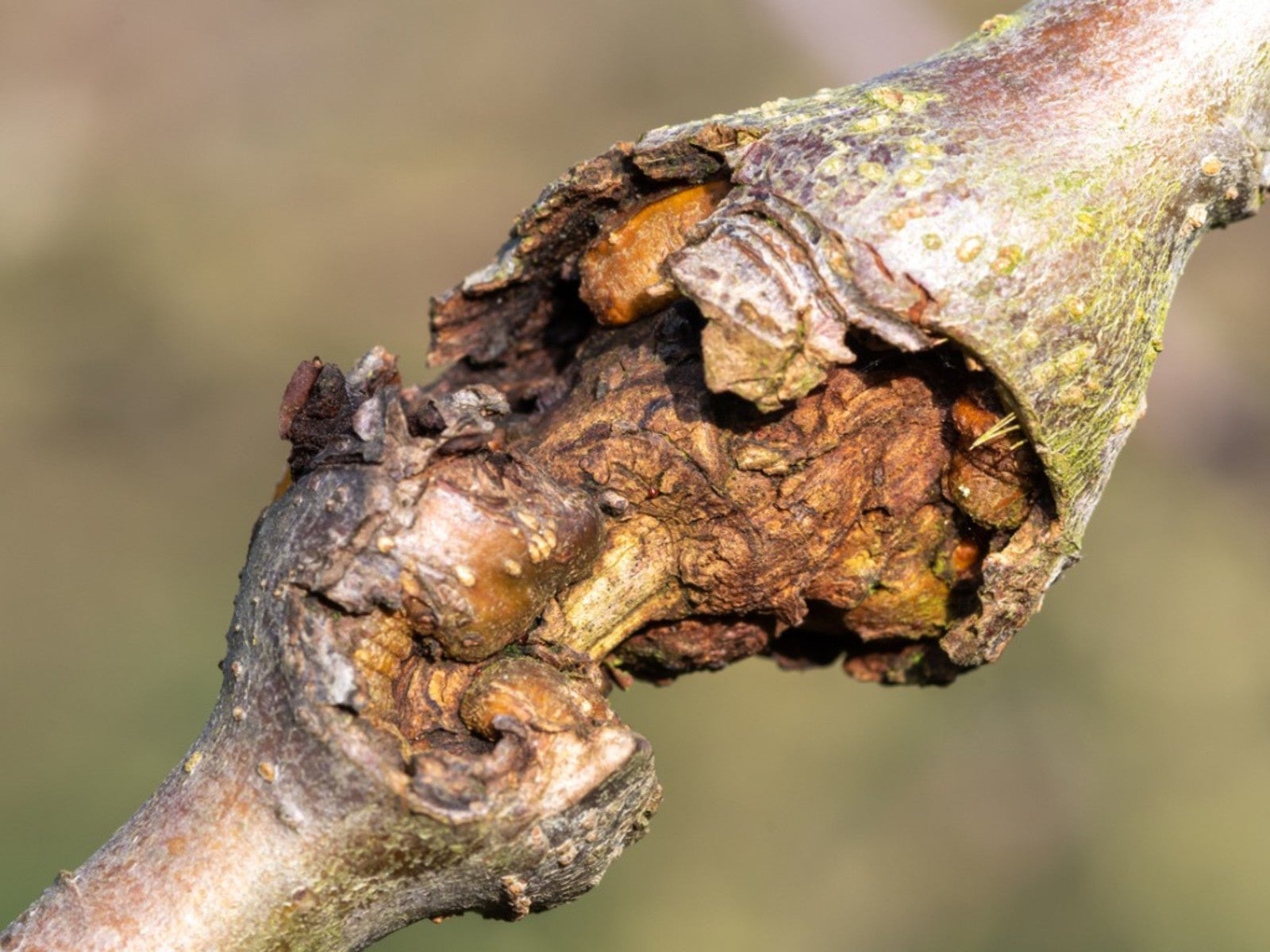Canker On Fruit Trees: What To Do For Trees Weeping Amber Color Sap


Tree cankers that ooze orange or amber colored sap may indicate that the tree has Cytospora canker disease. The only way of fixing tree cankers caused by the disease is to prune out diseased branches. The best method of control is preventing damage that allows the airborne fungus to gain entry into the tree. Keep reading to learn more about what causes amber sap on trees and what can be done for a tree weeping amber color sap.
What is Cytospora Canker?
Cytospora cankers occur when the airborne cytospora fungus enters a tree through injuries and damage. It forms a sunken canker that spreads gradually, eventually girdling the branch and killing everything beyond the site of the canker. The diseased area may become covered with a growth of black fungus.
What Causes Amber Sap on Trees?
Cytospora canker is caused by the fungus Cytospora chrysosperma. The fungus enters the tree through damaged bark. The types of damage that leave the tree susceptible to infection include pruning wounds, flying debris from lawn mowers, string trimmer injuries, frost, fire, and cat scratches. Tiny, bumpy fruiting bodies, called pycnidia, form on the dead tissue, giving the bark a rough texture. The pycnidia ooze an orange or amber, jelly-like sap that stains and discolors the bark. Symptoms are seen on a variety of fruit and shade trees throughout the United States.
How to Control Cankers
There is no cure for cytospora canker on fruit trees and shade trees, but you can control the spread of the disease by pruning out the infected area. In late winter or early spring, remove infected branches at least 4 inches (10 cm.) below the canker where the tree is weeping amber color sap. Disinfect pruners between cuts with a disinfectant spray or ten percent bleach solution. If you use bleach on your pruners wash, rinse, and dry them before putting them away to prevent corrosion. Proper tree maintenance that prevents stress goes a long way toward helping a tree resist disease and recover from cytospora canker. Water the tree slowly and deeply during dry periods. Fertilize annually in late winter or spring with a low-nitrogen, high-potassium fertilizer. Prune regularly so that you don't have to make severe cuts later on. Remove dead, damaged, and weak twigs and branches that may provide an entry point for disease and never leave stubs attached to trunks or large branches. Remember to disinfect your pruners. Avoid injuring trees when performing lawn maintenance. Raise the mower blades high enough so that they won't nick exposed roots and mow so that debris flies away from the tree rather than toward it. Use string trimmers with care to prevent cuts in the bark of the tree.
Sign up for the Gardening Know How newsletter today and receive a free copy of our e-book "How to Grow Delicious Tomatoes".

Jackie Carroll has written over 500 articles for Gardening Know How on a wide range of topics.